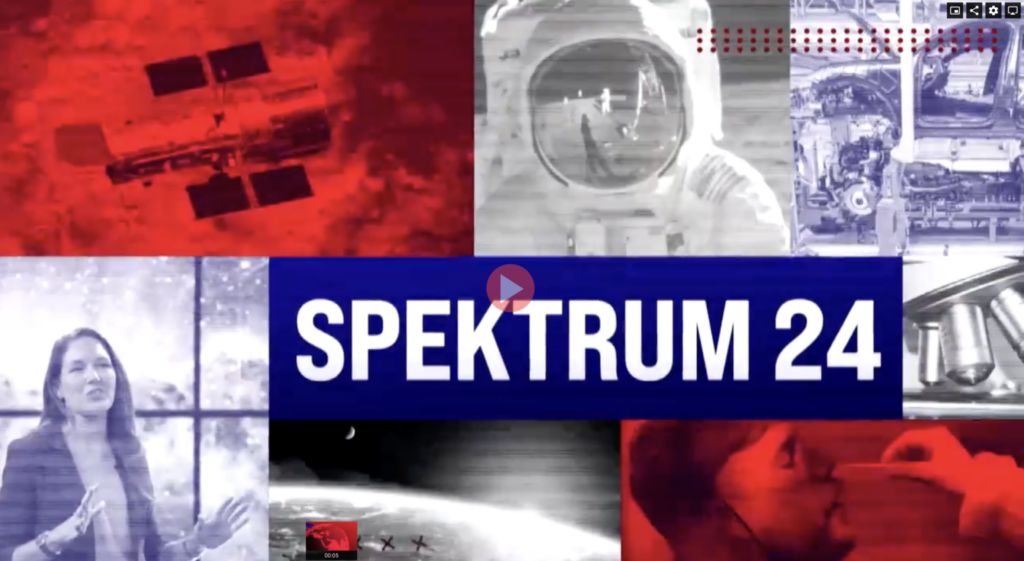In order to increase awareness, it is essential to be able to introduce the project to a wider audience. In the following video, the chairman of the executive committee of Slovak National Center for Quantum Technologies Doc. Mgr. Mário Ziman PhD. explains the essence of quantum communication. The interview took place at the Institute of Physics at the Slovak Academy of Sciences, at QUTE – pavilion of quantum technologies. The main objective of the interview is to explain what quantum communication technologies are and how they work.
The quantum communication infrastructure is essentially adding one more layer to the classic communication technologies, which provides an opportunity to increase the security of the communication. The quantum layer of the communication will provide a cryptographic primitive by generating keys between two remote users. This exchange is called provably secure meaning that one only needs to assume the laws of physics in order to prove the privacy of the exchange. Thanks to these symmetric keys provided by quantum technologies in a way that no eavesdropper can remain undetected, the two users can safely implement highly secure cryptographic tasks to communicate securely.
Many attempts to implement these quantum networks have occurred since the last couple decades but mainly stayed at the academic research level for demonstrative purposes. We want to train experts on the devices needed for quantum communication, so that we can build our own prototypes. This way we can better mitigate any type of attack vector that could target the implementation of the QKD protocol as experts of the system rather than buying new devices.
In quantum communication, we can privately exchange the cryptographic keys using photons, and without this key, in theory, no eavesdropper can recover a message that would have been encoded using the one time pad method. The advantage of the photonic approach that is being developed at the Slovak National Center of Quantum Technologies is the compatibility with current telecommunication infrastructure meaning that we can use the existing optic cables to create quantum networks. We are still sending the light through them, but this time on the single photon level. In the case of quantum key distribution, we need to build optical nodes that are going to send and receive the quantum information in question by using specific optical hardware. The optical nodes are polarisation analysers of the received photon, which can represent 2 different logical values depending on the optical path taken by the photon.
The entanglement-based quantum communication layer is being used to exchange the correlations with photons. The entanglement-based implementation strategy means that the quantum systems, even if located far from each other, have spooky properties that show strong correlations with no classical analog. The advantage of using quantum communication technologies is that even if an eavesdropper tries an attack on the optical link, both sides that were communicating can see the disturbance and decide not to use the generated key so they just start the protocol again from the beginning.
Later, Doc. Mgr. Mário Ziman PhD explains quantum bits and how they work. Qubits are the main resource of quantum information. A qubit can represent a superposition of 0 and 1, meaning it can take a continuous and infinite amount of values in between. In the video an object is being shown that can look both like a 0 and a 1 in order to illustrate this principle of superposition. With this technology, we can create the cryptographic keys, make mathematical computing faster, and make measurements more accurate and precise than any classical counterpart.
On the optical table behind we can see the entanglement-based photon pair source used for quantum communication. The laser in this system pumps a crystal, which ideally produce photon pairs, with a certain polarization, which can be used to encode qubits. The polarization can for example, be either horizontal or vertical, but also a superposition of both.
The photon pairs are engineered into the desired quantum state and then splitted through the optical cables to generate correlated signals. In the institute, 1 photon was arriving to the upper floor of the building, where Bob optical node is located and is receiving the information, while the second photon was sent to St. Pölten, Austria, and now we also have a link to the International Laser Center in Bratislava. It takes 0,7 ms for a photon to get to Sankt Polten, 0,4 ms to IQOQI Vienna, and 0,03 ms to ILC Bratislava.
In the first part of the project, the communication system will be built in the west part of Slovakia, and later connected with Presov and Kosice. The technology has been tested through a connection with Sankt Polten, and we look forward to creating the network with other cities. The skQCI which is a Slovak National Quantum Communication Infrastructure is part of the European Quantum Communication effort, which means that our nodes will later be connected with nodes in other European countries in the second phase of the project.
The new quantum communication layer will be created on top of the existing infrastructure of the internet. Regarding the speed of the technology, quantum communication protocols cannot compete with the current rates of classical communications. However, it will bring enhanced security that will be useful for specific applications such as sending sensitive information (e.g. medical records), and with that, the speed is not the foremost.
At the end, Dr. Ziman is also talking about a cryogenic refrigerator that is being used to cool down the detectors.


